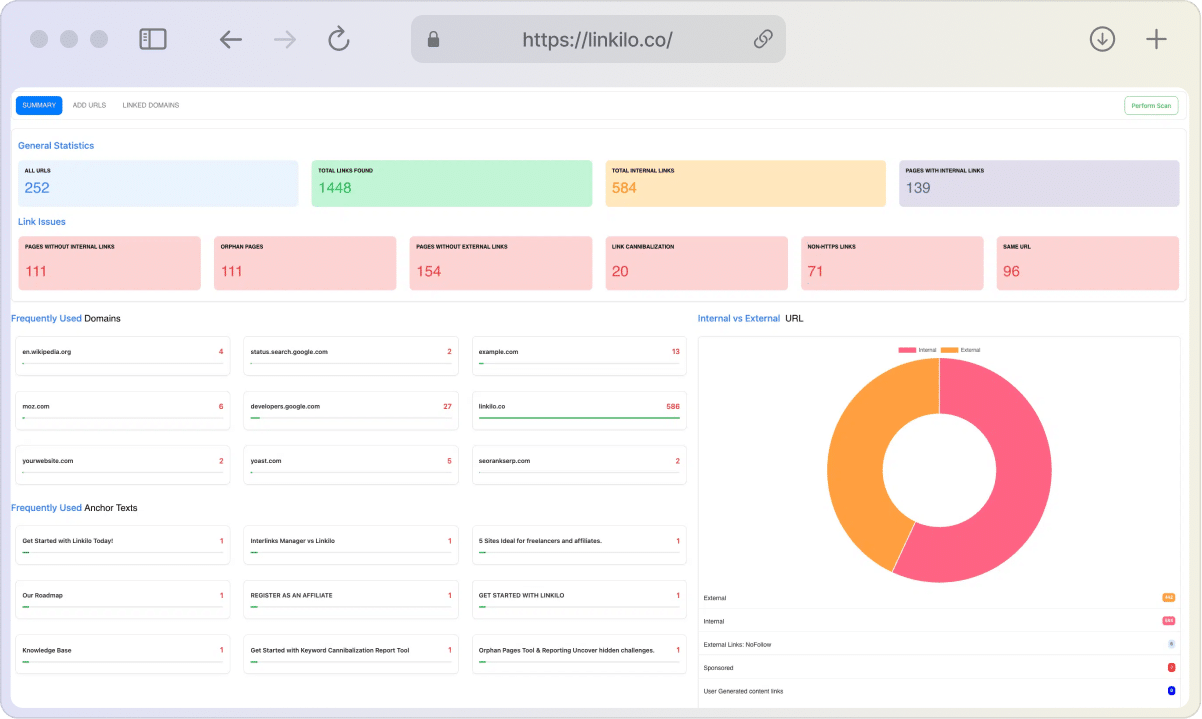Ever noticed how the same marketing message falls flat with some people but hits the bullseye with others? Imagine being able to tweak your tone, your pitch, and how you explain things – instantly getting on the same wavelength as your audience. Understanding different groups is your secret weapon, whether you’re writing blog posts, sales emails, or social media captions. Let’s get you there!
Core Principle: Empathy Is Everything
Before crafting a single word, step into your audience’s metaphorical shoes. Ask yourself these foundational questions:
- Who is this specific audience? Get detailed. Be granular about their demographics (age, industry, roles), but don’t stop there. Consider their interests, fears, daily concerns, and how your product/service relates to those things.
- What knowledge level do they possess? Avoid alienating experts with basic information or overloading a layman with obscure jargon. The perfect middle ground maximizes value and clarity without condescending or frustrating.
- Why are they here? Are they looking to learn, solve a pressing problem, or be entertained? Match your content and tone to that intent to avoid falling flat.
- Where are they consuming this? A busy executive reading a report on their phone needs a different visual and writing style compared to a hobbyist enjoying a long-form print magazine.
- What channels do they engage on? Do they prefer direct emails, long-form articles on your blog, or snappy, visually-driven social media content? Adjust accordingly.
The “How” Of Audience-Centered Writing
With your audience deeply analyzed, let’s explore how it impacts your practical writing choices across several essential elements:
- Voice and Tone: This encompasses personality, formality level, and the overall emotion conveyed. Examples:
- Friendly and Encouraging: An onboarding email welcoming new customers to your SaaS product.
- Professional and Authoritative: An industry white paper showcasing original research.
- Humorous and Relatable: Social media posts promoting a lifestyle brand targeting Gen Z.
- Language Complexity: Consider their vocabulary base within the topic sphere. Strike a balance between clarity and avoiding sounding condescending. Tools like Readable.com (
readable.com) provide metrics. Examples:- Beginner’s Blog: A post entitled “What Is Digital Marketing?” should offer simpler explanations compared to an email on “Leveraging SEO for Long-Tail Keyword Visibility.”
- Formatting and Visuals: Consider how and where a particular audience experiences your content. Adapt these design elements:
- Font Choices: Sans-serif fonts are easy to read on screens, while serif options excel in print.
- Heading Usage: Headings help users skim long articles, especially on the go.
- Infographics or Videos: For complex topics, consider making visual aids.
- Calls to Action: What do you want the audience to do after reading? Be crystal clear on the precise desired action without overwhelming them with choices. Consider wording like:
- “Want to Learn More?”: Offers a soft entry point for casual browsers.
- “Download Your Free Guide Today”: Creates urgency and appeals to value-driven audiences.
- “Book Your Consultation Now!”: If the piece leads directly to sales, don’t hesitate to be directive.
Adapting Your Writing Through Examples: Let’s get specific!
Let’s take a hypothetical core topic — “Productivity Software”. Let’s envision how various groups differ in their needs from such solutions:
- Small Business Owners: Focused on time-saving, low learning curve. Content should emphasize how this integrates with existing tools they use. Consider case studies demonstrating real-world ROI.
- Technical Teams: They care about granular functionality details, automation capabilities, and how this helps solve their specific coding-related workflows.
- Freelancers: Highlight flexible workflows and individual task tracking abilities. Pricing may be of higher concern for this solo practitioner audience.
Beyond Basic Demographics: Psychological Profiling 101
While data like age or job titles serve as a springboard, real influence begins when we explore deeper needs, motivations, and even internal dialogues your audience experiences. Here’s where to start your research quest:
- Forums and Online Communities: Where does your ideal audience hang out online? Reddit, niche forums, or specific Twitter hashtag feeds are like eavesdropping into goldmines of real-world conversations. Observe:
- Their Lingo – How do they naturally describe their own challenges or successes? This offers keywords and phrasing your content should use to resonate.
- Frustration Vents – What drives them up the wall? Identify those gaps your product or content can fill with a compelling solution.
- Questions They Ask – Uncover knowledge deficiencies on the topic, leading to helpful ‘knowledge nugget’ style content or tutorials.
- Customer Reviews (Good and Bad): Dig into what people love and hate about similar products, focusing not just on features, but how it aligns or falls short in improving their lives. Reviews highlight what makes them truly tick.
- Engage them Directly: Use polls, surveys, or even short email inquiries. Keep it focused – one insightful question is often more useful than twenty generic ones. Offer the incentive of early access or insider status to boost participation.
Analyzing for Patterns: Turn Raw Insight into Targeted Writing
All this information is overwhelming without order. To glean insights, ask yourself:
- What’s the Emotional Hook? Do they want relief from something (problem focus) or hope for a future state (aspiration focus)? Your content shifts depending on whether they’re driven primarily by fear or by excitement.
- Objections or Rebuttals? What counter-arguments might they have against your ideas? Don’t ignore these- instead, weave in acknowledgments and solutions into your content preemptively.
- Can I Relate? If you have similar experiences or were once in their shoes, use authentic personal narratives. Stories build connection faster than data alone.
Making it Actionable: Let’s Workshop a Persona
Let’s imagine you’re a digital marketer pitching website creation services. Here are two hypothetical ‘personas’ and how your pitch drastically changes between them:
Persona 1: Busy Small Business Owner
- Pain Points: Overwhelmed with tech, short on time, worries about looking unprofessional online.
- Content Hooks: Emphasize simplicity, done-for-you templates, and case studies about boosting local lead generation with websites.
Persona 2: Ambitious Freelance Designer
- Pain Points: Low-balling clients, wants to be perceived as an expert, not just someone using drag-and-drop tools.
- Content Hooks: Highlight flexibility, custom functionality options, discuss SEO tactics for designers.
Key Takeaway: The more tailored your message, the higher your chance of landing not just clicks, but those deep, ongoing customer relationships.
Adjusting Your Delivery: Matching Tone and Context
Imagine you’re trying to explain technical information to a tech newbie and a seasoned engineer. You’d naturally adjust your wording and pacing; that same philosophy needs to exist with your writing. Consider these scenarios where tone and language vary greatly:
- Thought Leadership vs. Quick Guides:
- In-depth “white papers” allow for industry jargon and detailed analysis.
- Social media captions must grab attention in few words, often prioritizing entertainment or emotional connection over pure information.
- Customer Stage: Each touchpoint of buying journeys warrants adapting how you ‘talk’:
- Early Stage Content should be educational and focused on building trust
- Later Stage Content can directly encourage trial, purchase, or booking with more aggressive calls to action.
The Importance of Platform Nuances
Where your content lives makes a huge difference. Here’s a breakdown of common channels and the specific adjustments needed:
- Email:
- Subject lines become EVERYTHING — short, punchy, and promising a compelling benefit or piquing curiosity works best.
- Consider personalization if using your reader’s name feels appropriate within brand norms.
- Social Media:
- Platform matters as much as the audience. LinkedIn encourages a more professional slant, while TikTok relies on humor, viral trends, and snappy audio.
- Hashtags, emojis, and the cadence of your writing change drastically depending on where you’re posting.
- Blog Posts:
- Allow for greater information density and more complex reasoning
- Use your SEO knowledge! While writing for humans always comes first, keywords still factor into content structure and phrasing to ensure visibility.
Adapting, Not Always Re-Writing
Good news: Sometimes it’s a matter of minor tweaks instead of reinventing the wheel for each audience. Here’s how:
- Intros and Headlines: Start strong to match the platform and draw readers in with their specific concerns. The opening can be vastly different while the supporting arguments remain similar.
- “Repurpose” with Purpose: A core video transcript can become a blog post, LinkedIn article, or email series. This requires conscious edits for length and style as each format demands.
- Voice as Foundation: Even when tweaking for channels and targets, your underlying brand voice must stay consistent to avoid brand erosion.
Tip: Develop ‘style guide’ notes as you start tailoring your writing. List commonly used words, humor usage levels, and overall tone so your adjustments happen quickly, avoiding a blank-page freeze each time.
Mindset Over Rote Rules: Keep an Open Mind
As your business evolves, so will your ideal audience. The world changes as do trending communication styles! Being agile is vital for long-term success. Here’s how to be prepared:
- Monitor Engagement Metrics: Are certain demographics clicking less over time? Are particular social posts driving the wrong kind of comments? Data provides insights on adjustments needed.
- Ask & Observe: Never assume you know exactly what your audience wants. Run regular polls, ask open ended questions, or analyze responses to your competitors’ content for new clues.
- Don’t be Afraid to Fail: Sometimes experimenting with your voice or a new content medium lands with a thud. Analyze what went wrong, adjust, and don’t give up! Resilience matters.
Troubleshooting Common Audience Missteps
We all make miscalculations! Here are some typical blunders and how to correct course:
- Too Niche? Overly Broad? Getting the level of granularity right takes trial and error. If no one engages with your hyper-specific topic, perhaps widen the focus slightly. Conversely, if clicks are high but no conversions happen, your topic might be too generic to stand out.
- Boring Voice = Lost Readers: Especially in crowded, informational content markets. Infuse personality without sacrificing professionalism. Can you use an appropriate conversational style when relevant?
- Ignoring Comments and DMs: Actively engage! People often reveal needs or ask questions that signal you can refine your messaging to reach new customers you had initially overlooked.
Key Takeaway: Audience Insights Are Not Static
What your target audience loves today might not work in a year. Committing to regular reassessments makes your content work smarter, not harder.
Cultivating an Audience-Led Approach
Here’s a framework to future-proof your content against fickle trends:
- Listen More Than You Speak: Observe discussions, questions, and pain points more often than creating new content.
- Prioritize Relevance over Virality: Chasing meme trends for engagement is fleeting. Ensure your content offers enduring value in your specific niche.
- Build Community for Feedback: Don’t assume a simple survey captures everything. Facilitate ongoing conversations in spaces your target audience already resides (Discord, Slack groups, etc.)
In Conclusion: The Power of Audience Connection
Learning to tailor your writing for various audiences is an ongoing practice, not a set of rigid rules. By prioritizing their needs, knowledge levels, and communication preferences, you’ll gain better results that go beyond basic engagement metrics. You’ll foster trust, loyalty, and a greater understanding within your community. Embrace empathy as your guide, keep refining your techniques, and witness how powerful the written word can truly be!




